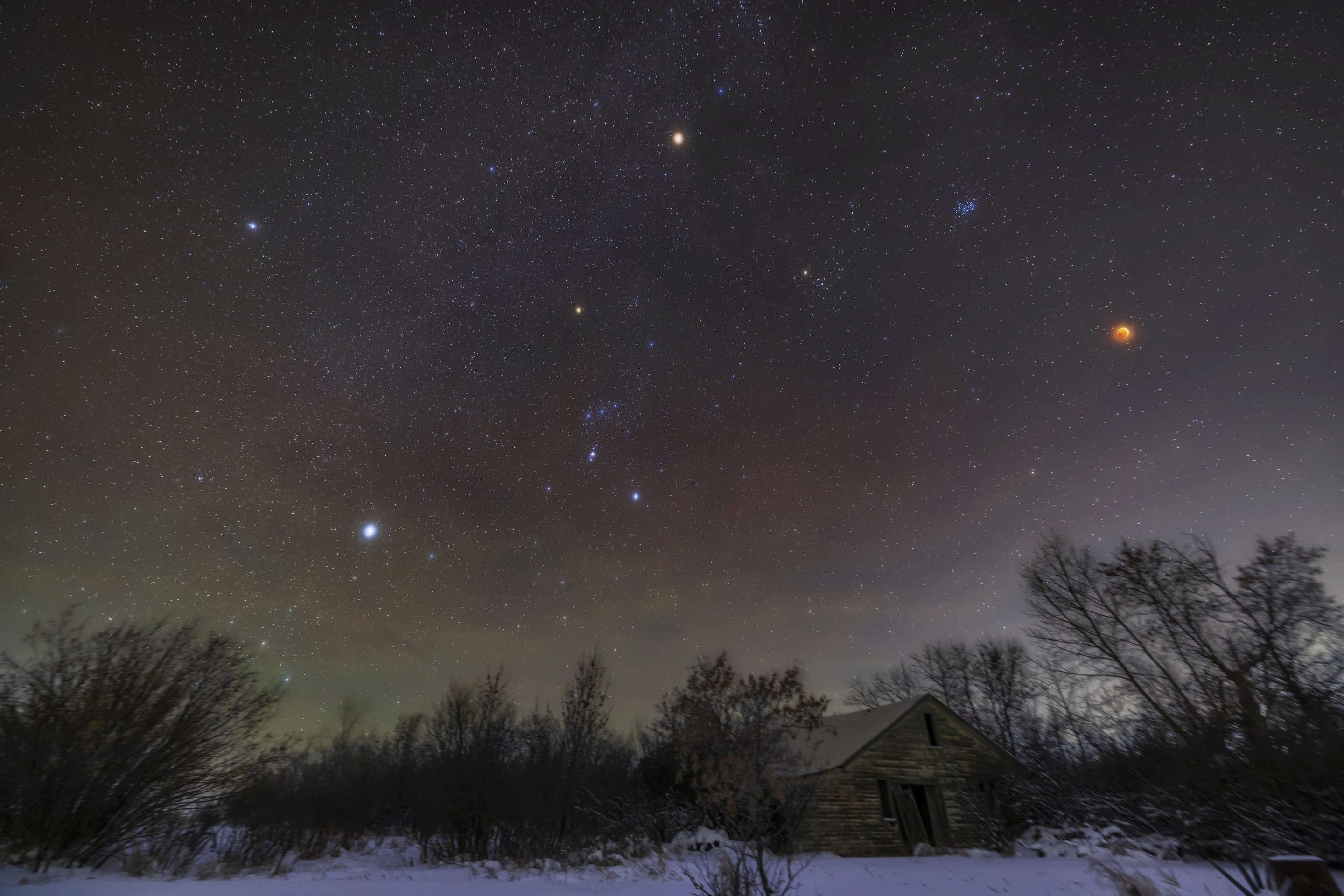The Great East Coast Drone Panic seems to have abated, or at least gone into hibernation. It didn't have staying power because, for whatever unexplained lights people believed they were seeing in the skies, every video posted of said lights was immediately and very easily explainable. Sir, that's clearly jets lining up to land at an airport. Governor, that's obviously Orion's Belt. Darren Rovell, that's the most airplane-looking airplane I've ever seen in my life. There may have been drones involved at some point, but the hysteria ballooned for the simple reason that, suddenly, people in one of the busiest airspaces in the world were paying attention to the night sky for the first time in their lives.
Rather than take the opportunity to mock, I think this could be a chance to educate. The night sky, even in populated, light-polluted areas, is full of interesting stuff. That stuff can be mysterious and even spooky if you don't take the time to learn what it is you're looking at. But once you do know—and there are apps that will tell you—the stuff becomes even cooler.
The first thing you're going to want to do is download a flight-tracking app. I use Flightradar24, but they're all pretty much the same, give or take some bells and whistles. You open up the app and you get a map of your precise location, with an overlay of all the aircraft operating there at that exact moment. And I mean all the aircraft—from jumbo jets and private prop planes to traffic helicopters and the Goodyear blimp. Pilots and air traffic control need this stuff for safety reasons, and since the realtime data is public, you can have it too. See some weird moving lights? Open the app, look on the map, and I suspect you'll see that there's an airplane there; the UAP becomes no longer U or A.
(Another easy way to tell if that thing is an airplane if you don't want to interrupt your sky watch with a phone? Whether it's got FAA-compliant red and green navigation lights on either wingtip. It's always red on the left wing and green on the right; knowing this helps other pilots identify the plane's direction, and determine who has the right of way. If two planes are approaching at a 90-degree angle, the one that sees the red light has to yield.)
What's especially neat is that the apps tell you all about each plane: what kind of craft it is, where it's going, where it's been. How cool, that Newark flight is heading to Cairo! How lame, that's just a LGA-CLT. You can make up stories about the people on these flights if you wish. Not that I would ever do that. (I might, however, annoy my seatmate at a game at the Staten Island ballpark, as I use my boat-tracking app to read off where every visible cargo ship in the harbor beyond the outfield wall has arrived from. Ooh, Mumbai!)
Beyond individual planes, use of the app and regular attention to what's above you will give you a grasp of the wider sky—a very urban version of getting in touch with the rhythms of your world. I live below the landing path to LaGuardia, but only in its normal runway configuration. When the winds are from the south or the west, they switch to another configuration, because planes always prefer to take off and land into the wind. Because of this, over the years I have learned to tell, broadly, what direction the wind will be blowing, before I leave my house, based on whether I can hear airplanes overhead or not.
Ah, but there are things farther away than planes. Indeed, many of the "drone" sightings proved to be planets or stars. There is a rich history of people mistaking celestial bodies, especially Venus, for UFOs. (One astrophysicist estimates that Venus, visible in the early evening and morning when more people are outside, low in the sky, and 15 times brighter than any other non-Moon object, is historically responsible for half of UFO reports.) Any self-respecting Earth-dweller should aim to have at least a basic familiarity with the sky, so you don't, like Larry Hogan, embarrass yourself by mistaking the single most recognizable constellation for a formation of drones.
Again, there's an app that can do this for you. I use SkyView, which is only the second actually helpful use of augmented reality since the technology was invented. It overlays the stars and planets on your camera screen, so that if you see something in the sky and want to know what it is, simply point your phone at it and tap the appropriate dot.
Want to know what's visible on any given night from where you are? There are sites for that. For example, tonight, minus any cloud cover, I should be able to see with my naked eye four different planets and many bright stars, and if I really want to go nuts, a decent pair of binoculars will reveal two additional planets and several asteroids.
But you don't need gear, or even particularly dark skies. There's stuff to see even if you're in a city. Venus, unconscionably bright, has been hanging out in the western evening sky lately, notably close to the moon—and with Saturn in between the two. Once you get the hang of identifying the planets (they have faint individual colors, and because their light has relatively less distance to travel, they do not shimmer like stars), it'll pay off for you. I have found few things more spiritual than walking home from a bar slightly tipsy, a pleasant chill in the air, and identifying the bright, slightly ruddy pinprick of light I can see above me as the damn planet Mars.
There's more! You can see satellites and space stations—there are sites that'll tell you where and when to look. What's that blurry blue patch? It's the Pleiades (it's always the Pleiades). What are those bright guys who always hang out together? Those are the dog stars. Lucky enough to spot Deneb? She's about 15 quadrillion miles away, and you can see her. Isn't that wild?
Would it be wondrous and awe-inspiring if we actually were being visited by alien intelligence, or if the "drones" people saw actually were secret advanced technology? Sure. But the night sky is already wondrous and awe-inspiring. I think it only becomes more so once you know what you're seeing. So start looking up.







